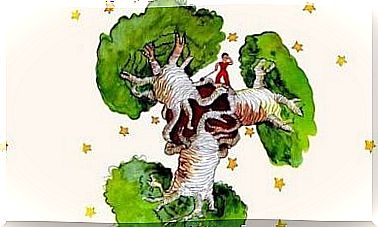Processing Disgust – How Does The Brain Do It?

Cultivation of disgust is one of the most basic functions of humans, and it has kept the species alive for several centuries. And although it is a bit forgotten by psychology, there is already enough information available about how the brain does it.
One can define disgust as a feeling of strong contempt or aversion to certain objects or substances. It makes you expel it, distance yourself from it or just reject it.
This feeling is universal and recognized as one of the six basic emotions common to all cultures and even to those with sensory limitations. It comes with a distinctive facial expression. For example, there is an elevation of the upper lip, frowning and lowering of the corners of the mouth.
Furthermore, it usually comes with a reduction in tension, a reduction in the galvanic skin response, nausea, a decrease in heart rate, a feeling of aversion, distancing from the object, respiratory changes and characteristic vocalizations, such as “Ad!”.

Disgust nature
You have to keep in mind that experience has dictated the model of the human brain, as a species and individually. Even though you may not know it, humans had some form of behavioral immune system before they developed the advanced system we have today.
The aforementioned basic system used to act as a barrier that protected humans from contact with parasites and other potential dangers.
The benefit that comes with processing disgust is primarily about avoiding illness. Therefore, although there are cultural differences according to what annoys people, the main things that trigger this feeling are the following:
- Secretions and certain body parts: Feces, saliva, blood, wounds, vomit, dirty feet, etc.
- Rotten food.
- Animals, such as insects, worms and spiders.
- Certain characteristics of unknown people or those who are different.
- Violations of some social and moral norms.
No matter how innate this feeling is, keep in mind that people acquire certain aspects around what annoys them. This is where the cultural and developmental differences are most evident. For example, children up to the age of two do not seem to know what disgust is.
However, one can explain this by saying that they are still being cared for by their parents. This is primarily because the human species is quite immature and vulnerable through the first years of life. Thus, children sooner or later develop this feeling by observing the behavior of their parents.
The brain, and how the processing of disgust takes place
To know how your brain processes disgust, you basically need to consider two regions: the insula and the limbic system (amygdala and hippocampus).
The insula receives information from the sensory pathways and sends information or stimuli to other structures, such as the limbic system, the ventral striatum, and the orbitofrontal cortex. This region seems to be responsible for experiencing indignation, as well as recognizing expressions of indignation in other peoples.
For example, insula in people with Huntington’s disease will not work properly. Therefore, they have trouble experiencing this feeling. Furthermore, stimulation of the insula can lead to nausea.
The limbic system, and especially the amygdala, is related to negative emotional processing, such as fear, disgust, and learning. In fact, a group of members from the University of Granada and the Autonomous University of Baja California have recently discovered a specific region of the amygdala. It causes a rejection of unpleasant tastes.
Processing of disgust
Until now, scientific studies have claimed that disgust was part of certain brain areas. They have taken pictures of the areas they thought were involved. Thanks to new technology, such as functional magnetic resonance imaging, one can now clearly see how the brain dynamically processes disgust.
About a year ago, a group of researchers from Catalonia used 30 people for a study. In this, they presented these people with a six-minute video that showed pictures of many delicious dishes. And they also showed them another movie that had pictures of food next to unpleasant things, such as cockroaches, people eating worms, and so on.
The results revealed that the brain is still processing this feeling 40 seconds after seeing the unpleasant images. Furthermore, the images of the brain showed that it is not only a part of the brain that is activated by an outrageous scene or an unpleasant object. That’s almost half of it.
According to processing, researchers say there are three stages:
- A stimulus occurs and the brain begins to activate the body’s defenses and protective mechanisms, even without being aware of it.
- The second phase is one with conscious vigilance, after the brain assesses a stimulus as consciously negative.
- Finally , there is a third phase of assimilation. It experiences a person disgust and stores it in memory for later reference. This phase can last about 26 seconds.

Disorders
You may be extremely upset by some kind of stimuli that did not irritate you to begin with. Thus, there are several psychopathological disorders that are either related to or at least have an indignation component.
There are some examples of anxiety disorders, such as bipolar disorder or obsessive-compulsive disorder, where there is an excessive concern about the spread of bacteria and dirt.
The indignation component is crucial in some phobias, such as hemophobia or social phobia. According to the latter, it seems that some people feel a certain disgust or reluctance to interact with people. Finally, the role of disgust is still under investigation according to eating disorders.









